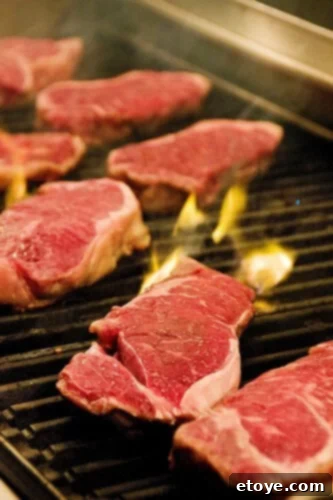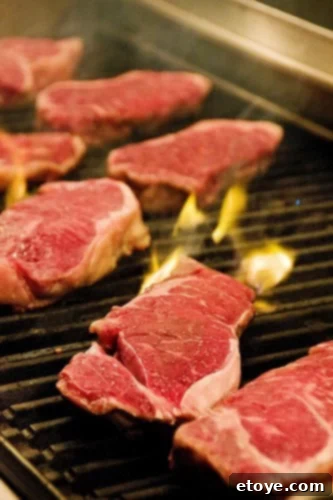
“So, have you ever considered hosting a steak tasting?” This intriguing question landed in my inbox from Carrie Oliver, the visionary behind Oliver Ranch Company. My initial reaction was one of skepticism. I, like many others, had always perceived steak quality through the conventional lens of USDA grades: the often-tough Select, the widely accessible Choice, and the premium, budget-stretching Prime. Beyond these classifications, I wasn’t convinced there was much more to explore in the world of beef flavor. After all, I had already mastered a popular salting method that remarkably transforms affordable Choice cuts into succulent, tender steaks, a technique that has circulated widely online.
Yet, Carrie’s question lingered. Over the next few weeks, our email exchange unfolded like a slowly opening faucet. Each message from her gently turned the knob, allowing a small, steady stream of novel ideas and insights about beef to trickle my way. She understood that a sudden deluge of complex information would overwhelm, so she strategically unveiled the nuanced world of artisan beef. It was an education, presented patiently and thoughtfully, that began to chip away at my preconceived notions of steak quality.
The core of her argument resonated deeply with me: If I invest as much in a fine bottle of wine as I do in a quality steak, why shouldn’t I extend the same level of curiosity and discernment to my beef? We scrutinize the origins of our vegetables, ensuring they are free from harmful chemicals and grown ethically. Why wouldn’t we demand the same transparency and care for the beef we consume, inquiring about the cattle’s treatment, their diet, and the philosophy of the ranchers?
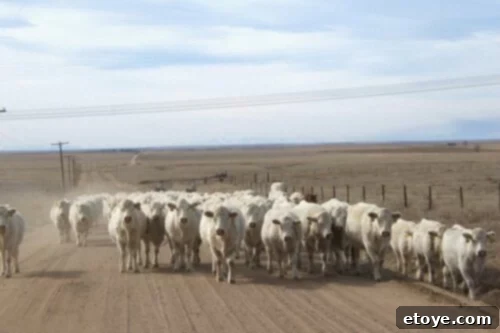
Cattle grazing peacefully at a Colorado ranch
The reality, as Carrie enlightened me, is that the flavor profile of beef is far more intricate than simply “good” or “bad.” It’s a symphony of influences, meticulously crafted by nature and nurture:
- REGION: Just as a Chardonnay from California’s Napa Valley offers a distinctly different character from one produced in New Zealand, the geographical region profoundly impacts beef flavor. Factors like climate, geological composition of the land, and soil richness all dictate the quality and type of grass and grain available to the cattle. This terroir creates unique nutritional inputs that manifest directly in the meat’s taste. A cattle raised on nutrient-rich plains with diverse forage will yield a different flavor than one from a more arid, less varied environment.
- RANCHERS: Much like a master winemaker who pours passion and expertise into crafting the perfect vintage, dedicated ranchers are artisans. Their commitment to humane animal treatment significantly influences the quality and taste of the beef. Stress-free cattle, raised with care, produce superior meat. Beyond ethical treatment, a rancher’s artistry extends to their specific blend of feed and the meticulous aging processes – whether dry-aged for intense flavor concentration or wet-aged for tenderness and moisture retention. These practices are akin to a winemaker’s blending and aging techniques, showcasing skill and pride in their final product.
- BREED: The distinct difference between a Pinot Noir and a Cabernet Sauvignon is immediately apparent to a wine connoisseur. Similarly, the breed of cattle plays a pivotal role in the beef’s flavor and texture. A Holstein, known for dairy production, will taste markedly different from a Black Angus, famed for its marbling and robust beefy flavor. Different breeds possess unique genetic predispositions for muscle composition, fat distribution (marbling), and overall taste characteristics.

If the wine analogy doesn’t quite resonate, consider the evolution of coffee. In the pre-Starbucks era, our choices were often limited to “regular,” “decaf,” and perhaps “Juan Valdez.” Today, the coffee aisle is a global tapestry: Fair Trade Certified, Sumatra, shade-grown, Kenyan, Ethiopian, Indonesian, each with a unique story and flavor profile. Beef is undergoing a similar revolution. Its flavor and quality extend far beyond the generic “Select,” “Choice,” and “Prime” grades, opening up a world of discovery for the discerning palate.
It was a gradual awakening, but I began to truly grasp that steaks indeed possess distinct flavor differences. And as this realization dawned on me, an old habit clicked into place: perhaps that’s why I’ve always gravitated towards one particular butcher shop over others. Hmmmm… the subconscious recognition of superior, nuanced flavor.
But the most profound revelation was still on the horizon. (Stay tuned, because there’s also a chance to win an Artisan Steak Tasting Pack!)
Unveiling the World of Artisan Steak: A Flavorful Journey
Last Thursday marked a turning point in my culinary understanding. Carrie flew down from Toronto to host an extraordinary artisan steak tasting for a group of 15 eager participants. It was a masterclass in discerning beef quality, as Carrie expertly guided us through a blind tasting of six distinctive steaks, each sourced from small, dedicated ranchers.
The preparation was simple yet precise: each steak was seasoned solely with kosher salt and quickly grilled to a perfect rare. Numbered to ensure impartiality, the blind tasting was held at Chefs On The Loose, a brand-new, state-of-the-art cooking school nestled in Tampa, Florida. A huge thank you to the welcoming team at Chefs On The Loose for providing the perfect backdrop for our flavorful adventure.

Here, Carrie is captured, perhaps not asking if anyone is vegetarian, but certainly captivating the group with her insights into why conscious sourcing of beef is paramount. Her passion for artisan beef was infectious, as she highlighted the ethical and gustatory benefits of knowing your steak’s story.

This image showcases just a fraction of the magnificent steaks presented. With 15 of us enthusiastically participating, we devoured almost every last piece. It was a testament to the exquisite quality and variety on offer!

In this candid shot, Carrie, Jeffrey, and Chef Eddie share a moment of wonder, contemplating how 22 bottles of wine might possibly be consumed alongside our artisan steak tasting. (Spoiler: they were, but with careful timing!)

Indeed, every single bottle of wine was eventually uncorked, but crucially, this was reserved for *after* the rigorous blind tasting. Wine, with its complex flavors, would undeniably influence our perception of the steaks. To ensure our palates remained pristine and unbiased between each sample, we diligently cleansed them with crisp slices of green apple. The steaks, as mentioned, were prepared simply and uniformly, seasoned only with kosher salt to allow their inherent flavors to shine through.
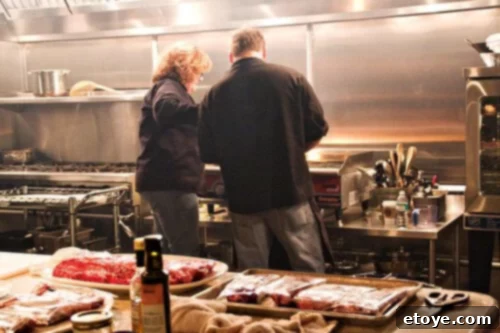
One can almost hear Chefs Laura and Eddie humorously whispering, “Who invited the enthusiast who keeps snapping photos, encouraging the meat to ‘work it, baby, look good for the camera! Come on, beef, give us some attitude!'”
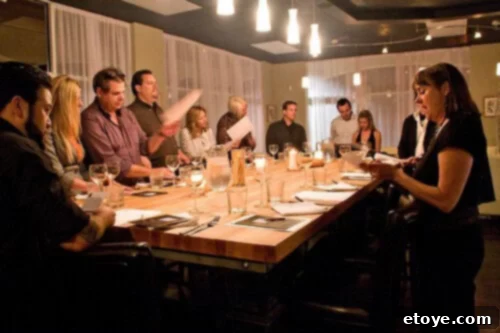
Carrie, with her characteristic charm and expertise, led the group through the process of rating and describing each steak. While perhaps not singing a hymn, she certainly orchestrated a harmonious and educational session, encouraging detailed sensory analysis.

In the foreground, food writer Greg and Laurent, the Ritz Carlton restaurant manager, are deep in discussion, half-jokingly contemplating a career change to professional steak tasters. Meanwhile, our host Laura diligently slices the next round of steaks, while James, ever the opportunist, can be spotted in the background, subtly snagging extra bites.
Mastering the Language of Artisan Steak Tasting
To truly appreciate and articulate the nuanced sensory experience of steak tasting, Carrie provided us with an invaluable tool: a detailed chart designed to help us find the perfect words. As the founder of the Artisan Beef Institute, Carrie’s mission is to empower both consumers and industry professionals with the knowledge to understand and celebrate exceptional beef.

The Revealing Artisan Steak Taste Test Results
N-Bar Ranch, Dave Workman from Montana
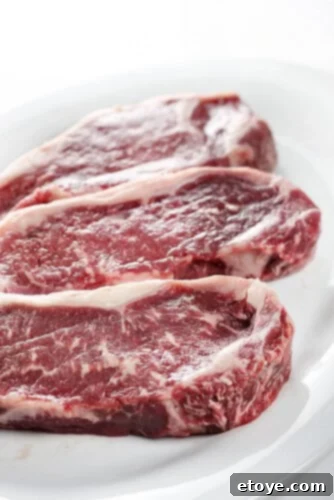
- Breed: 100% Black Angus, dry-aged a minimum of 14 days. This classic breed is renowned for its consistent marbling and tender beef, further enhanced by the dry-aging process which concentrates flavor.
- Tasting Notes: The N-Bar Ranch steak presented a well-balanced flavor profile, reminiscent of a consistently excellent steakhouse experience. It offered an interesting quality, though perhaps without a dramatic “wow” factor. Its taste was straightforward, delivering a satisfying and pleasant bite throughout. The dry aging contributed to its depth without overwhelming the natural beefiness.

===============================================
Kobe Beef America Ranchers from Holdrege, Nebraska
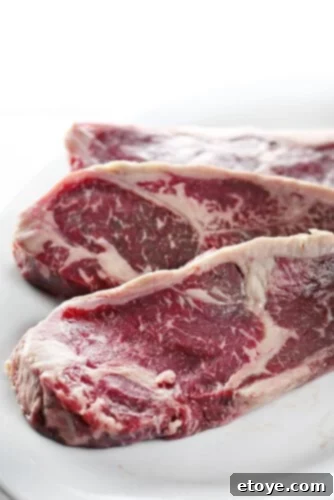
- Breed: A 50% Wagyu, 50% Black Angus cross. Wagyu, originating from Japan, is celebrated for its exquisite marbling and tenderness, often associated with luxurious practices like beer feeding and hand massaging. Introduced to the U.S. in 1976, it was crossbred with Angus to combine marbling with a familiar beefy flavor. This cut was wet-aged for a minimum of 21 days, contributing to its juiciness.
- Tasting Notes: This steak delivered an incredibly rich and complex flavor – sweet, savory, and intensely umami. Its dark, robust, and bold character was unmistakable. It literally melted in the mouth, earning it the unanimous title of the group’s favorite. Retailing often at $50+ a pound, this would easily qualify as “Prime-Plus.” It is undeniably a superb cut of meat, offering an experience of unparalleled richness. However, for my personal preference, it wasn’t my absolute favorite. I tend not to be a “melt-in-your-mouth” steak enthusiast; I often prefer the hearty, beefy chew of a good sirloin over the buttery texture of a filet mignon. Despite its premium price, for those seeking to experience Kobe-style beef, Oliver Ranch offers it at a significantly more accessible price point than many other retailers.

===============================================
Robert L. Beechinor, 3 Brand Cattle Company from Bakersfield, California

- Breed: Holstein-Friesian. Primarily a dairy breed, Holstein beef can offer a unique flavor profile, often leaner than traditional beef breeds.
- Tasting Notes: This steak was meaty and pleasant, with a subtle and softer flavor compared to others. While enjoyable, it didn’t possess a strong, memorable character, and its flavor tended to fade rather quickly, not lingering throughout the chew. This might be attributed to the breed’s typical lean muscle structure.
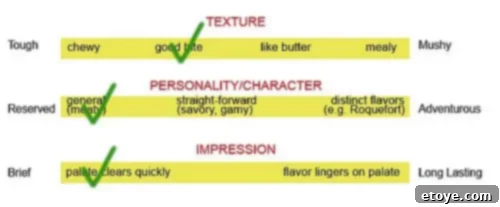
===============================================
Elliott & Ferris Families from Front Range Region, Ft. Morgan, CO

I regretfully missed capturing a photograph of their specific beef cut, but here is a wonderful image of the Elliott & Ferris families themselves!
- Breed: Charolais/Charolais Cross. Charolais cattle are known for their large, heavily muscled carcasses and lean meat, often yielding robust flavors.
- Tasting Notes: This was a truly exceptional steak. It presented a bright, sweet, and perfectly balanced flavor that fully enveloped the mouth. I absolutely adored this meat – its flavors evolved delightfully throughout the chew, offering a rich and deeply savory experience. This particular steak quickly became one of my personal favorites, and notably, Carrie’s too; she enthusiastically described it as “fabulous umami, gimme more!” It exemplified how superior genetics and thoughtful rearing can produce extraordinary results.

===============================================
Amazin Grazin from Manatee, Florida

- Breed: Braburn (a crossbreed between Brahman and Hereford). This was a very young cattle, less than 10 months old, raised exclusively on milk and grass with absolutely no grain. The diet plays a crucial role in its distinct flavor.
- Tasting Notes: This steak was an adventure for the palate – feral, complex, and notably gamey, almost reminiscent of mackerel. This very distinct flavor is a hallmark of truly grass-fed cows, meaning they received no grain whatsoever throughout their lives. Grass-fed beef is also inherently much leaner than grain-finished beef, making it an excellent choice for individuals mindful of fat content in their diet. While certainly an adventurous steak, its unique profile made it a fascinating and memorable component of the tasting experience.
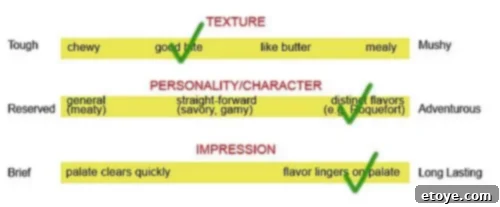
===============================================
Estancia from Uruguay
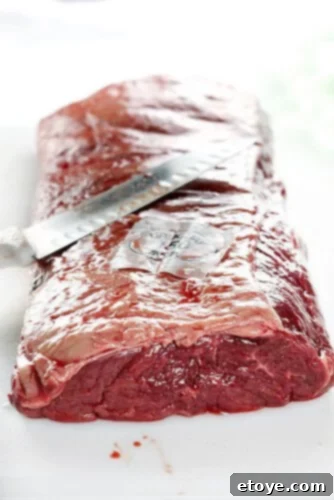
- Breed: Hereford, exclusively grass-fed with no grain. Herefords are a robust breed known for their good foraging ability, making them well-suited for grass-fed systems.
- Tasting Notes: This steak offered a profoundly complex and broody flavor profile, with distinct earthy, mushroomy, iron-like, and even subtle Roquefort cheese notes. Again, being exclusively grass-fed, it was a very lean cut of meat. HOWEVER, it’s vital to understand that lean DOES NOT equate to tough and chewy. In fact, this grass-fed beef tasted remarkably different from the Amazin’ Grazin sample, showcasing the vast diversity within grass-fed flavor profiles. I would have never guessed this steak was so lean; on the traditional USDA rating scale, it might have been graded as Select, but the tenderness and the big, deep flavor of the meat truly astonished me. It was a powerful demonstration that traditional grading doesn’t always capture the true potential of artisanally raised beef.
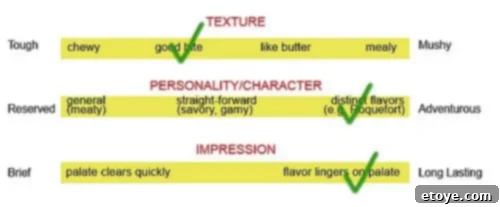
My Profound Revelation: Beyond the Grades
The tasting event culminated in a significant personal revelation. Despite its luxurious reputation and group popularity, I found that I didn’t particularly care for the super-fancy, expensive Kobe-style Wagyu beef as much as some of the other cuts. Don’t misunderstand; it was undeniably good, and I would never turn down a Kobe-style steak. However, my palate gravitates towards a big, beefy flavor with a satisfying chew. This preference, amusingly, makes me a “cheaper date” in the world of steaks!
But here’s the kicker: several of the steaks we tasted were, without exaggeration, among the very best I had ever experienced in my life. And not a single one of them was rated Prime. Many were Choice or even Select cuts by traditional USDA standards. My profound realization was this: true quality in beef extends far beyond the simplistic classifications of Prime, Choice, or Select. The depth of flavor, the tenderness, and the overall experience are intrinsically linked to a myriad of factors – the region where the cattle are raised, the local climate, their specific diet, and the meticulous care provided by the rancher. It became clear that knowing the provenance of your beef is crucial. Wouldn’t you much rather support a small, artisan rancher who pours their pride and expertise into every cut of beef?
Oliver Ranch Company is at the forefront of carving a new path for the beef industry. Their mission is to connect discerning consumers, who genuinely enjoy discovering specific flavor profiles in their steaks, directly with these dedicated small ranchers. It’s about fostering transparency, supporting sustainable practices, and elevating the entire beef-eating experience.
If you’re inspired to embark on your own artisan steak tasting journey, Oliver Ranch Company offers a specially curated Taster’s Pack. This pack includes four distinct steaks, each meticulously sourced from a different rancher. You can conduct this enlightening tasting test yourself at home, and for an even more insightful comparison, consider including one or two steaks from your local supermarket. To ensure truly unbiased feedback, always conduct your tasting as a blind taste test! I am confident that you will be astonished by the diversity and quality you discover. Should you have any questions, feel free to pose them in the comments below or directly email Carrie at [email protected].
The Grand Finale: Win a Free Artisan Steak Tasting Pack!

Ready for an incredible opportunity? Simply leave a comment below for a chance to win a free Artisan Steak Tasting Pack, courtesy of Carrie and Oliver Ranch Company! We will conduct a random drawing from all unique commenters on Sunday, November 9th. My sincerest apologies to my cherished international readers, but due to the complexities of international beef shipping, this contest is exclusively open to residents of the U.S. and Canada.
Here’s what’s included in the Artisan Steak Tasting Pack:
- Dry-Aged Charolais-Cross from the Front Range Region, CO, from Elliott & Ferris Family Ranches
- Dry-Aged 100% Black Angus from Russell Country, MT, from N-Bar Ranch, Dave Workman
- Wet-Aged Holstein-Friesian from Imperial Valley, CA, from 3 Brand Cattle Company, Bob Beechinor
- Wet-Aged Wagyu-Angus Cross from Select Kobe Beef America Ranches, under the direction of R.L. Freeborn
This exceptional pack, normally retailing for $84.95, features an 8-12 ounce NY Strip cut of each distinct style, offering a comprehensive and unparalleled tasting experience right in your own home.
To enter, just comment below and you’ll be automatically included in the drawing. For an extra entry, simply Tweet or blog about this contest, then return to comment again for your bonus entry!
Contest is now closed! Discover the lucky winner here…
***
How to transform cheap “choice” steaks into exquisite “prime” steaks (Yes, this method truly works – Carrie herself tested the salting technique on several of our tasting steaks, confirming its effectiveness!)
Chipotle Skirt Steak Tacos and the Culinary Adventures of La Taqueria
